





Diversity in surrogate ethnicity is increasing rapidly within Black and Latina surrogate communities. Both groups have grown since 2020 from only 3%-4% to 13% in 2023, reflecting a 4-fold increase. Caucasian surrogates remain the predominant ethnicity of surrogates at 69%. The number of surrogates from Asia has also increased, from 1% in 2020 to 6% in 2023. This reflects the increased awareness of infertility amongst the general population and the willingness of all ethnicities to learn of surrogacy as a means to help others in need.
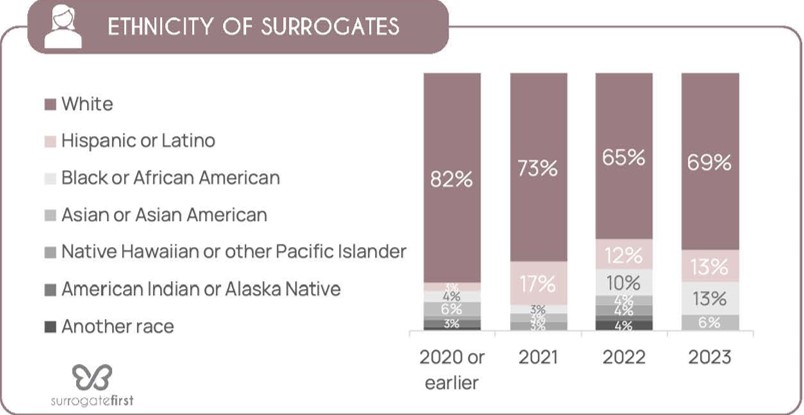
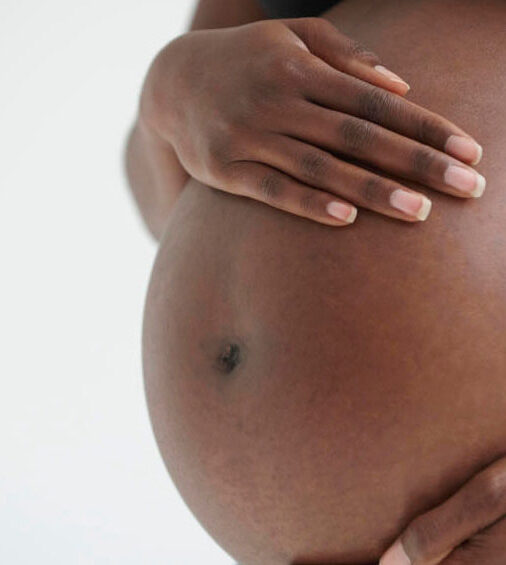

"The Hispanic community is the fastest growing ethnic group in the US and in major states of CA, TX and FL – all major hubs of surrogacy. The community’s increasing openness and acceptance of surrogacy is also growing and thriving.”
Jeff Hu, Owner SurrogateFirst
There has also been an increase of 50% of single parent surrogates. The percentage of surrogates that were “Not Married” grew from 30% in 2020 to 44% in 2023. This trend, paired with the increasing importance and availability of family support, allows for a successful journey regardless of being married or not.
"I take pride in being a single mother AND a surrogate, I am a role model to my children helping others and couldn’t do it without my family’s firm support.”
Surrogate Ashley
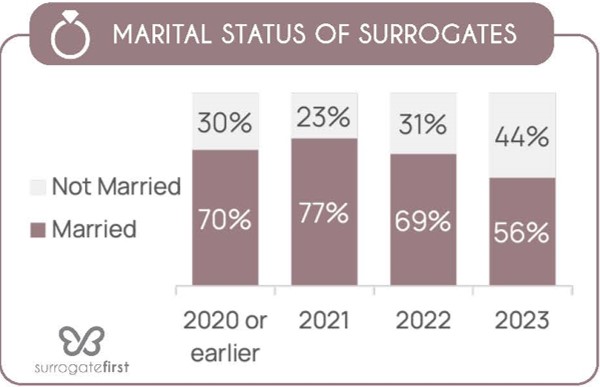
As noted above “Family” is the single most important group that surrogates rely on for support and has increased in importance over time from 31% in 2020 to a whopping 81% in 2023. Lifestyle stability has become a qualifying requirement by most surrogate agency screening processes; therefore, the frequency of “Unsupportive” families has been eliminated to 0% in 2023. A strong support network is necessary to lean on when surrogates need an extra hand, such as childcare; and for emotional wellbeing as well.
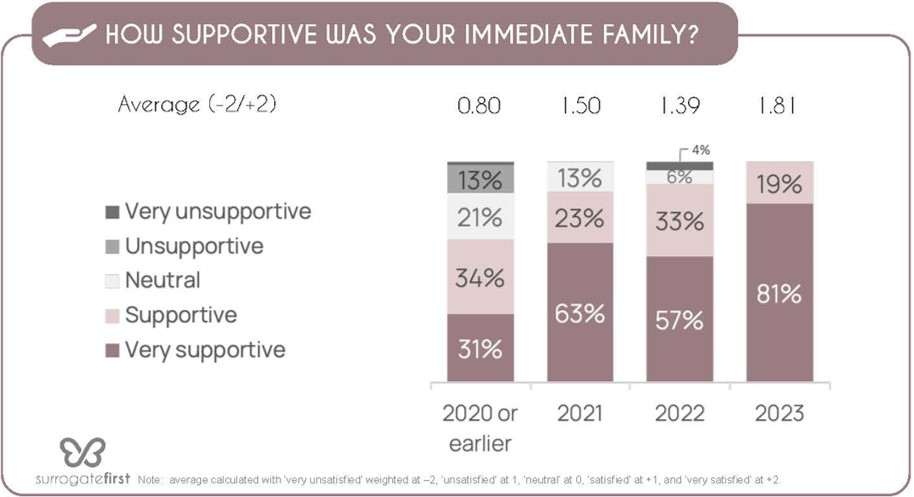
During the last three years surrogate preferences around termination stance have changed dramatically. Previously surrogates favored termination only for “major life-threatening medical reasons”, 61% in 2020 to only 31% in 2023 reflecting a 50% decrease. Instead, surrogate preferences have leaned heavily towards allowing “termination at intended parent discretion” increasing from 23% in 2020 to 63% in 2023.
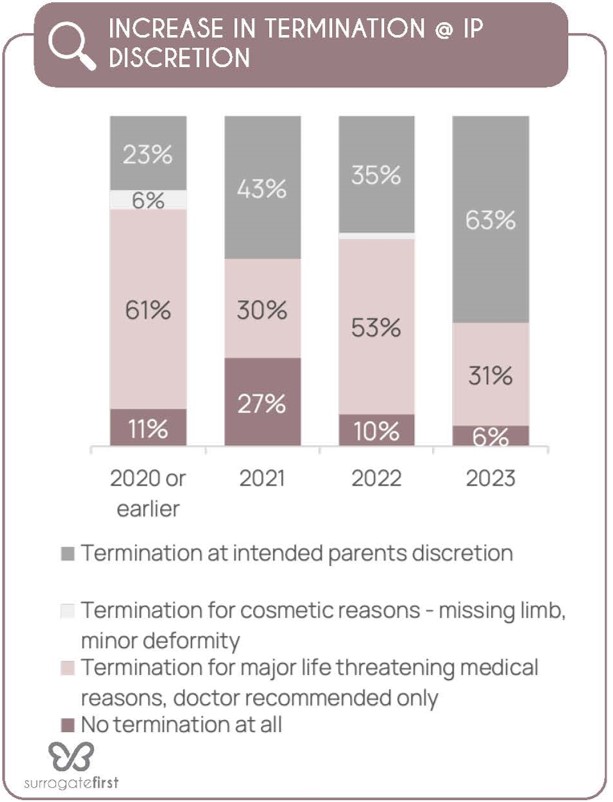
I trust and respect my intended parents; I knew they would do what was best for the child I was carrying so I chose to let them determine under what circumstances to terminate the pregnancy.
Surrogate Karina
Vaccination rates since 2020 remain similar at 63%, well below the national average of 79.1% as reported by the CDC1. However, the willingness to become vaccinated if requested by intended parents has plummeted from 20% to only 6% in 2023. The unwillingness reflects the majority of surrogates preference not to be covid vaccinated. This trend of unwillingness to be covid vaccinated continues into 2024 and beyond.
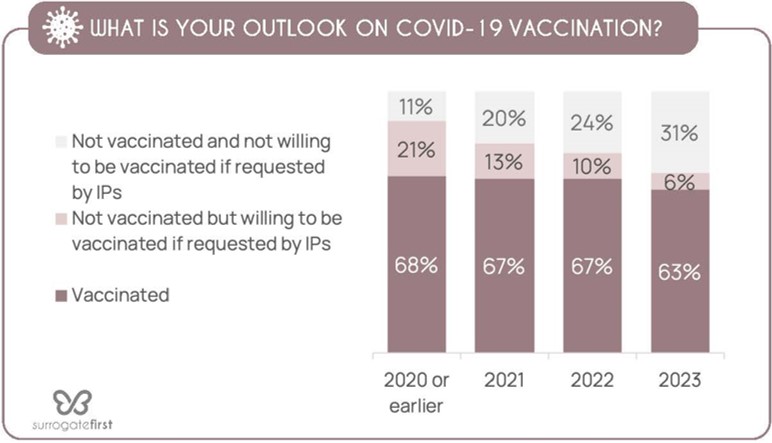
First time transfer success rates of 88% for surrogates are considerably higher than the national US average of 45.5% for women under 35 years old. The disparity can be contributed to increased screening and improved medical protocols, and the higher usage of egg donors that result in intended parents having higher quality embryos leading to better transfer outcomes.
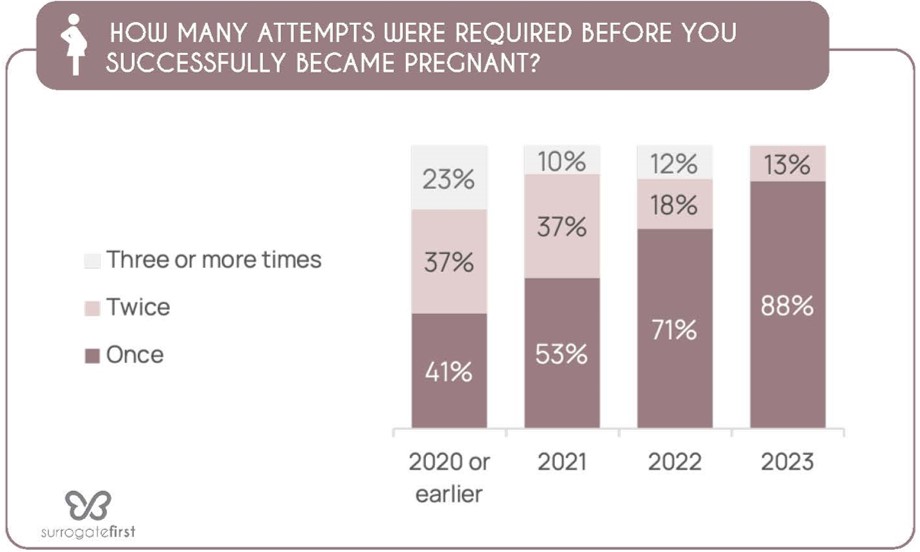
"Intended parents that use egg donation tend to have higher first-time success rates in IVF. Therefore, our patients that use a combination of donor eggs and a qualified surrogate have high rates of success. ”
Lina Li, Owner SurrogateFirst

In 2023 we have seen match times shorten to 2.5 months from a high of 6.8 months in 2020. Although the demand for surrogates remains high post-covid, we have seen an increased number of qualified surrogates which substantially shortens the match times.
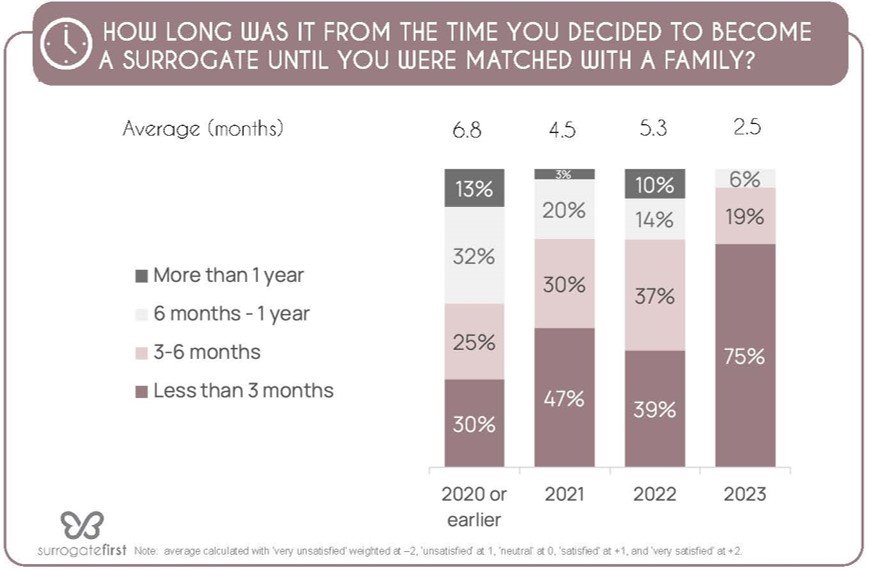
In recent years, surrogates have placed a “very important” role on the support of intended parents in having a successful experience, from 46% in 2020 to 75% in 2023. The matching process is now a two-way street, where surrogates are also screening and becoming more selective with what intended parent profiles they choose. Previously, surrogates relied more on the agency or IVF clinic for support, but this has changed over time. Surrogacy is a long and complicated journey, so it is important to have a healthy relationship and strong support between the surrogate and future intended parents
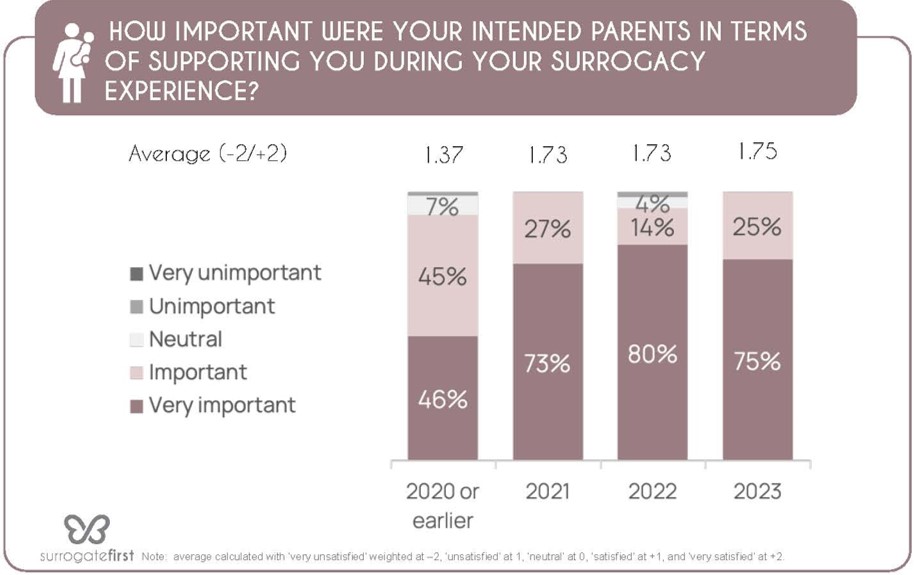
The #1 reason to become a surrogate was to help a family in need, therefore the intended parents that I carried for was also a top priority. Their support was key to having a fulfilling and successful journey.
Surrogate Elizabeth
Surrogates are increasingly open to carrying for all types of intended parents, especially same sex intended parents. The number of surrogates open to carrying for same sex intended parents increased from 32% in 2020 to 75% in 2023. This increase also reflects the increase in same sex couples pursuing surrogacy from the US and around the world.
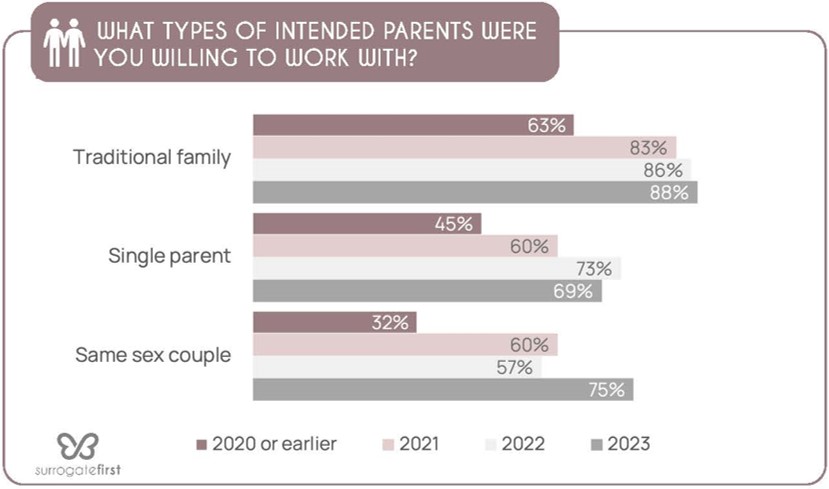
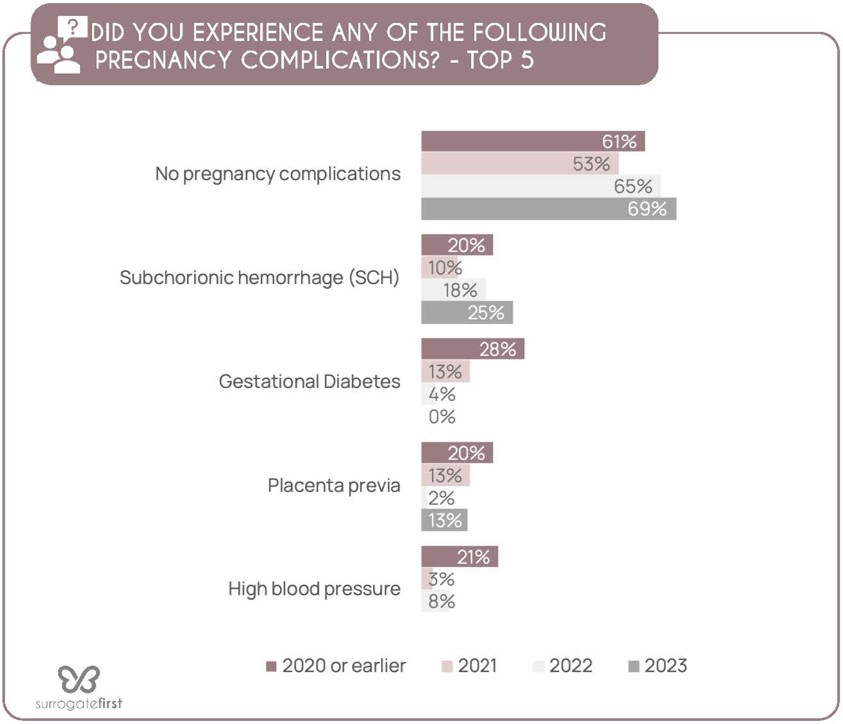
The mental and emotional health of surrogates continues to improve. Most surrogates, 69%, did not experience any pregnancy complications in 2023. This is a positive trend compared to 53% in 2021.
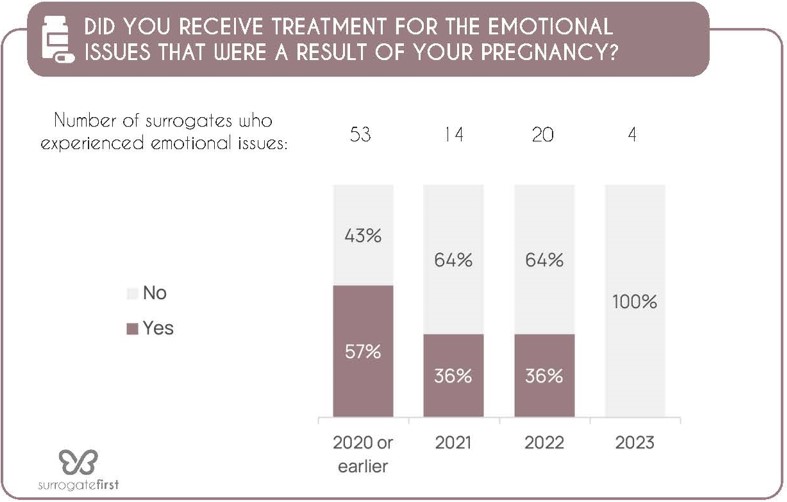
Another positive trend is the frequency of surrogates suffering from postpartum depression (28% vs. 14%) and anxiety (23% vs. 10%) is way down from 2020 results.
In addition, 94% of surrogates didn’t experience any postpartum issues in 2023, compared to 69% in 2020.
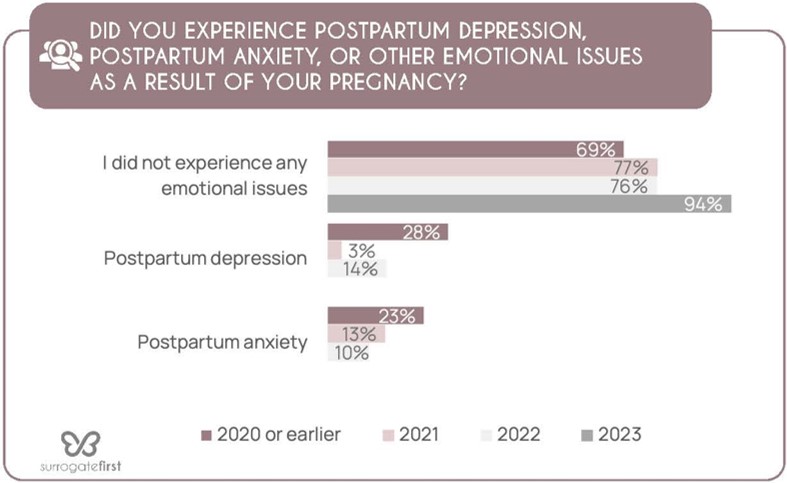
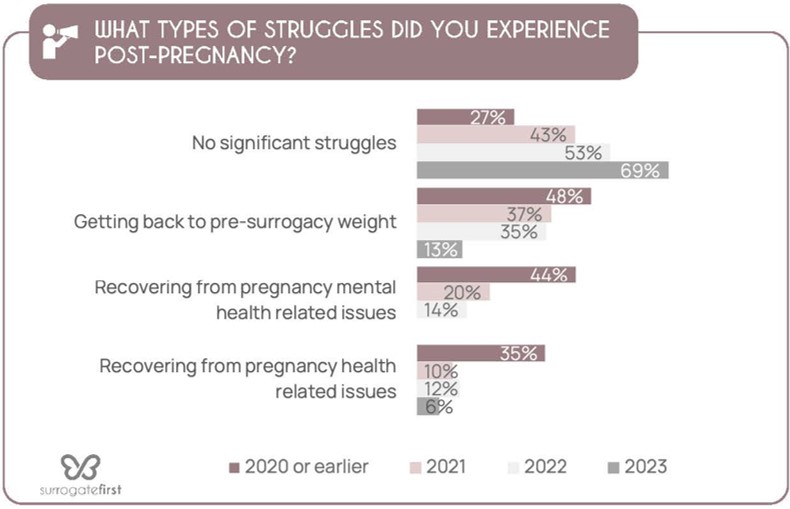
There are increasingly more support channels for surrogates from their peers and professional resources. Often, agency-led journeys have funds allocated for therapy included in the compensation benefits package. Case managers that check in with their surrogates on a weekly basis are also a strong support pillar. Surrogates also often join online groups with other experienced surrogates that act as a sounding board and mentors for advice. Finally, as noted above “Family” is the single most important group that surrogates rely on for support and that has increased in importance over time, from 31% in 2020 to a whopping 81% in 2023. All these factors play a role in providing mental health and emotional stability for surrogates for a healthier journey.
I really appreciated my case manager who was always there for me, I felt cared for and like a real person, not just a number.
Surrogate Stephanie
Traditionally, the birth and postpartum have been lowest due to the end of a long tiring journey or potential physical or mental issues during the pregnancy. However, the increase in dissatisfaction could be attributed to less personalized care with providers (physicians, agencies, etc.) as surrogacy journey volumes increase and become more commercialized.
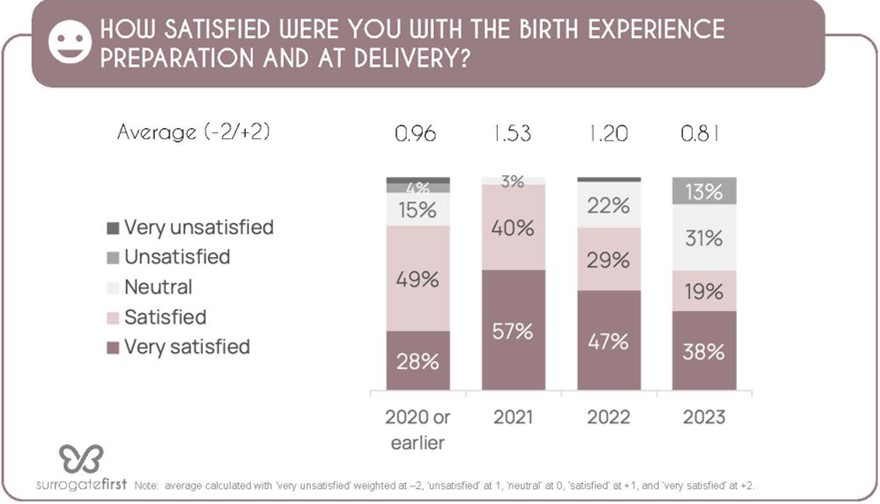
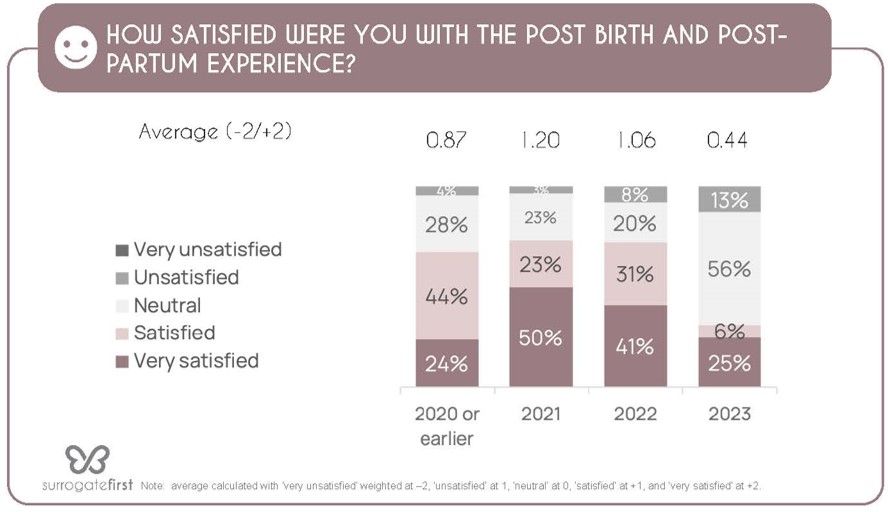
Surrogate total compensation (base payment plus non-cash benefits) in 2024 is on the rise. Base compensation has modestly increased (11%) from 2019 to 2023 from an average of $45,000 to $50,000. However, when surrogates were asked what they expect to be paid for future journeys, the average response was $61,000, reflecting a 20% increase for 2023 and beyond.
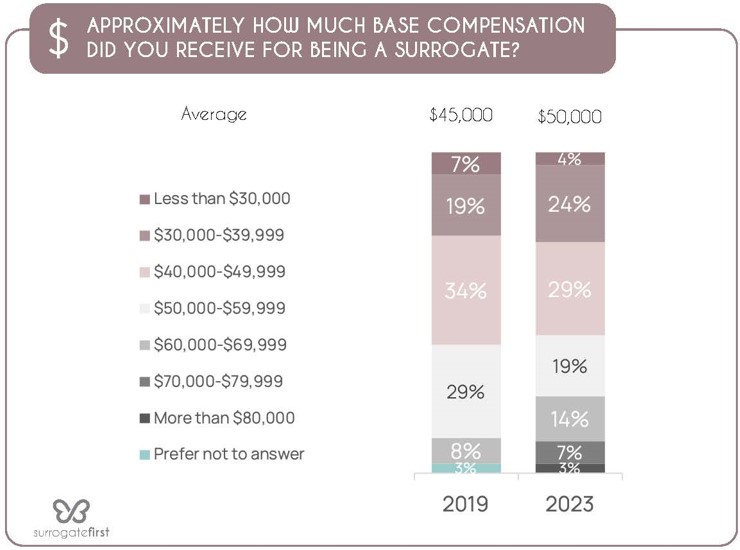
Surrogate benefits (non-cash benefits, excluding travel) have also been steadily increasing since 2020, from total estimated value of $11,800 to $13,600 in 2023. Almost all benefit categories have increased in frequency, with many previous “benefits” becoming basic requirements. Some examples include maternity clothing, legal services, life insurance and milestone bonuses. It is important to understand these benefits in order to meet surrogate journey expectations and norms to ensure a smooth journey. We expect benefits to continue to rise in 2024 and beyond.
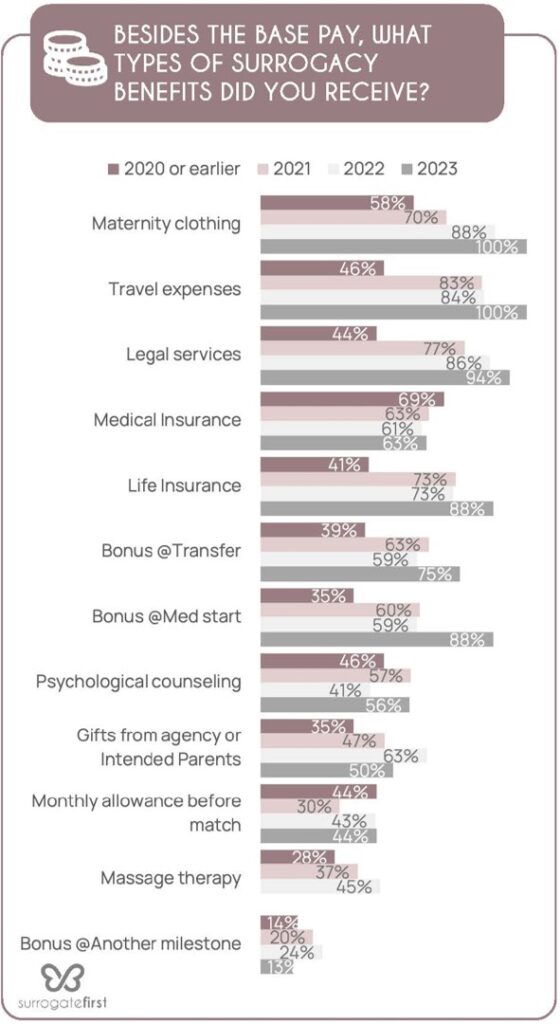
Although compensation and benefits continue to rise sharply, surrogate satisfaction towards their compensation has decreased. Most surrogates, 69%, were “satisfied” or “very satisfied” with their compensation, a decrease from 96% in 2020. If we look deeper, the disparity in compensation satisfaction stems from those answering “Neutral” or “Unsatisfied”, which has substantially increased from 4% to 31%; while at the same time “Very Satisfied” increased from 35% in 2020 to 44% in 2023.
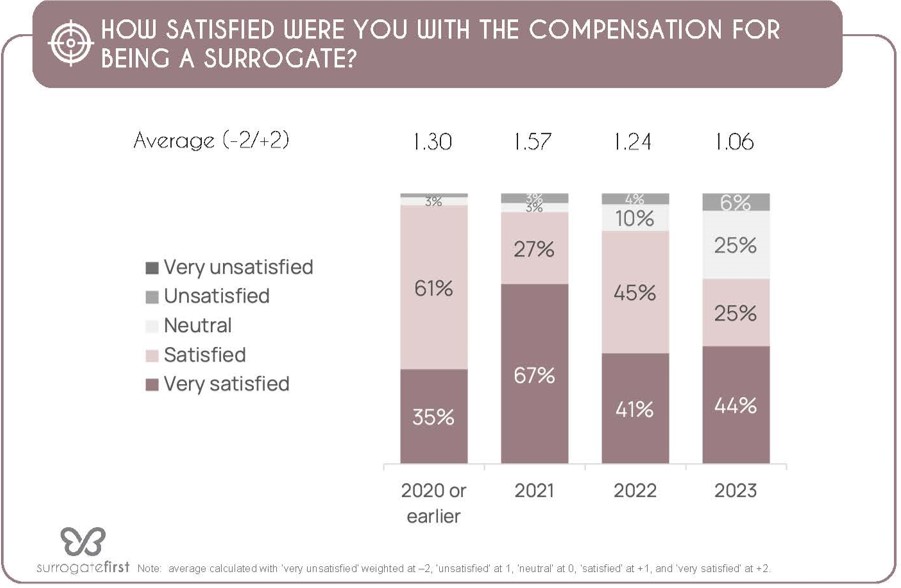
Overall surrogate journey satisfaction remains high at 76%. The proportion staying “Very Satisfied” has dramatically decreased from 61% in 2022 to 38% in 2023. There are many positive trends for surrogates, such as increased family support, faster match times, and the decreasing rates of pregnancy complications and mental health issues. 94% of surrogates reported no postpartum depression, anxiety or emotional issues, the lowest rates ever. Despite this, journey satisfaction has plummeted.
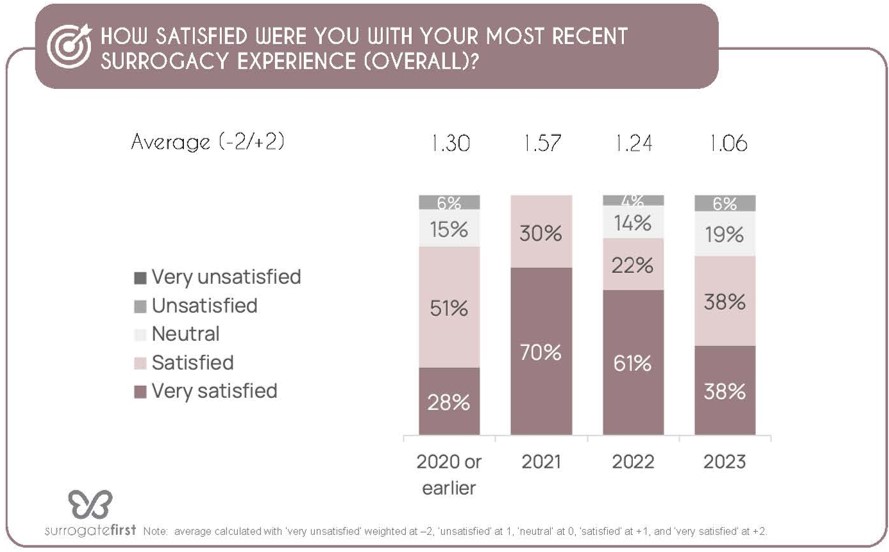
One main reason for this decrease in satisfaction is the gap between current and expected base compensation. Surrogates are requesting, on average, a 20% increase in base compensation from just one year ago at $61,000. In the previous four years, from 2020 to 2023, the increase was only 11%, from $45,000 to $50,000. Like others, surrogates are expecting a higher compensation to maintain their standard of living during a time where there is an increased cost of living due to high inflation and low unemployment rates.
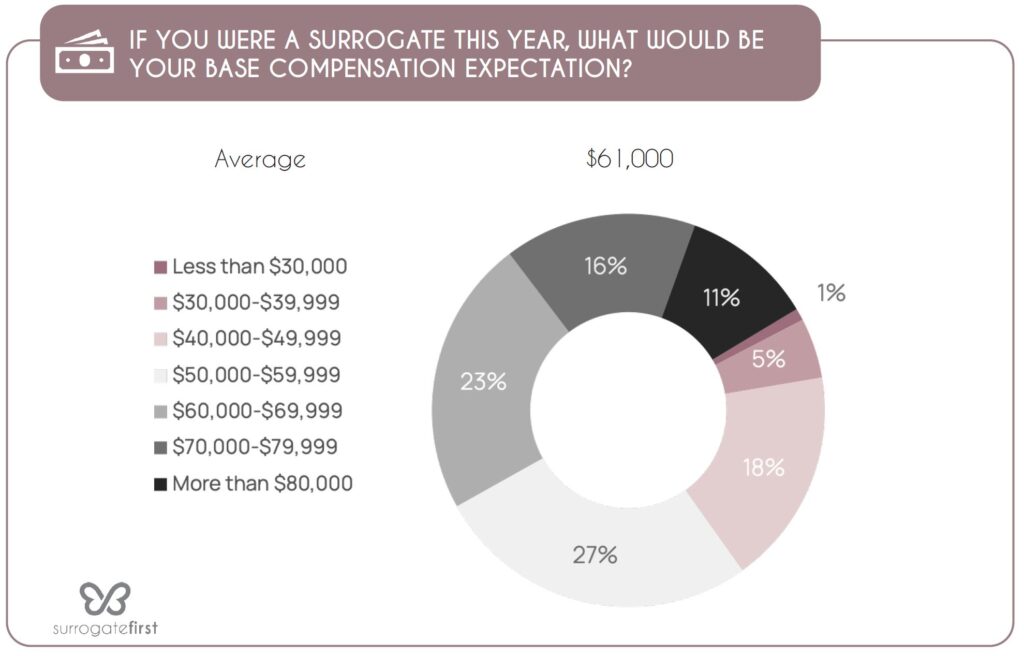
Furthermore, the unprecedented COVID-19 irregularities severely negatively impacted journeys between 2021-2022, which may skew the satisfaction ratings specific to that timeframe. Here is a list of issues our surrogates experienced during the height of the pandemic: